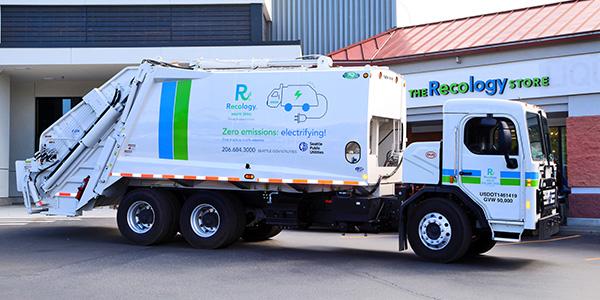Emerging Trends in the Garbage Collection Vehicle Market: A Comprehensive Study

Garbage Collection Vehicle Market Research Report: A Comprehensive Analysis
In today's rapidly growing world, efficient waste management has become a crucial aspect of maintaining cleanliness and sustainability. As waste volumes continue to increase, the demand for advanced garbage collection vehicles is on the rise. This comprehensive research report aims to provide valuable insights into the global garbage collection vehicle market, including loader types, technologies, vehicle types, propulsion options, applications, and regional analysis. By delving into these key aspects, we aim to equip industry professionals and enthusiasts with in-depth knowledge to make informed decisions.
Loader Types: Front, Rear, Automated Side Loader, and Others
Garbage collection vehicles come in various loader types, each offering unique advantages in waste collection operations. Front loaders, as the name suggests, feature a hydraulic arm in the front that lifts and empties waste containers into the truck. Rear loaders, on the other hand, load waste from the rear of the vehicle using a hydraulic mechanism. Automated side loaders, equipped with an automated arm, can pick up and empty waste bins from the side, reducing manual labor. Additionally, there are other specialized loader types available to cater to specific requirements within the waste management industry.
Technology: Manual and Semi-Automatic
The advancement of technology has significantly impacted the garbage collection vehicle market. Traditional manual garbage collection involves workers physically lifting and emptying waste bins into the truck. However, with the advent of semi-automatic technology, the process has become more streamlined and efficient. Semi-automatic vehicles utilize hydraulic systems to lift and empty waste containers, minimizing manual labor while improving operational productivity.
Vehicle Types: Light and Heavy Duty
Garbage collection vehicles are classified into two main categories: light duty and heavy duty. Light-duty vehicles are commonly used for residential waste collection and smaller-scale operations, while heavy-duty vehicles are employed for commercial, industrial, and municipal waste management. The selection of the appropriate vehicle type depends on the specific requirements and scale of waste collection operations.
Propulsion: Internal Combustion Engine (ICE) and Electric
Propulsion plays a significant role in the garbage collection vehicle market. Currently, the industry primarily relies on vehicles powered by internal combustion engines (ICE), which utilize fossil fuels. However, with the increasing focus on sustainability, electric garbage collection vehicles have gained significant attention. Electric propulsion offers numerous benefits, including reduced emissions, lower operating costs, and quieter operation. As the world transitions toward a greener future, electric garbage collection vehicles are expected to witness substantial growth.
Application: Residential and Non-Residential
Garbage collection operations are classified into two main categories: residential and non-residential. Residential waste management pertains to waste generated from households, while non-residential waste management encompasses waste produced by commercial establishments, industries, and municipal organizations. Understanding the distinct requirements and challenges within each application is crucial for developing effective garbage collection strategies.
Regional Analysis: North America, Europe, Asia-Pacific, and the Rest of the World
The garbage collection vehicle market exhibits a global presence, with key regions including North America, Europe, Asia-Pacific, and the Rest of the World (RoW). North America has traditionally been at the forefront of waste management practices, implementing advanced technologies and sustainable initiatives. Europe also showcases significant advancements in waste management, driven by stringent regulations and environmental consciousness. Asia-Pacific, with its rapidly expanding urban population, is witnessing a surge in waste volumes, leading to increased demand for efficient garbage collection vehicles Industry. The RoW region comprises emerging economies that are actively investing in waste management infrastructure to address growing environmental concerns.
In conclusion, this research report offers an extensive analysis of the garbage collection vehicle market. By providing insights into loader types, technologies, vehicle types, propulsion options, applications, and regional trends, the report equips industry professionals and stakeholders with valuable information to navigate this dynamic market. As the world focuses on sustainable waste management practices, staying informed and making data-driven decisions becomes imperative for organizations operating in the waste management sector.
Related Report:
automotive power distribution module
- Авто, мото
- Кейтеринг
- Досуг, развлечения
- Животные
- Красота, здоровье
- Образование, репетиторы
- Спорт и тренеры
- Строительство и ремонт
- Товары и магазины
- Туризм и отдых
- Финансы и страхование
- Литература
- Музыка
- История
- Политика
- Религия
- Искусство
- Кино
- Театр
- Хорошее здоровье
- Аксессуары
- Бизнес
- Разное


